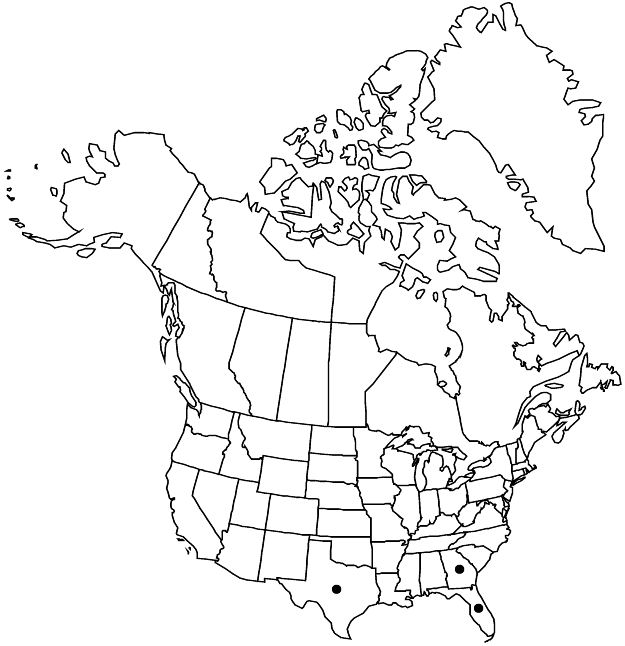Pavonia hastata
Diss. 3: 138, plate 47, fig. 2. 1787.
Subshrubs, 0.5 m. Stems stellate-hairy, hairs 0.1 mm. Leaves: stipules subulate, 2 mm; petiole to 1/3 length of blade; blade discolorous, ovate-triangular to hastate-oblong, to 7 cm, base cordate, margins coarsely crenate, apex column with 5 apical teeth, glabrous; stigmas included, glabrous; flowers sometimes cleistogamous, smaller, petals shorter than calyx, stamens 5. Schizocarps pale green, maturing dark brown to ± black, 6 mm diam., puberulent; mericarps without spines, dorsally keeled, 4 mm, reticulate-costate. Seeds minutely puberulent. 2n = 56.
Phenology: Flowering spring–fall.
Habitat: Sandy soil on coastal plains
Elevation: 100 m
Distribution

Introduced; Fla., Ga., Tex., South America (Argentina, Brazil, Paraguay, Uruguay), introduced also in Mexico, Australia.
Discussion
Pavonia hastata is often cultivated and has escaped in limited areas. The flowers appear to be seasonally cleistogamous, and these are usually not present when chasmogamous flowers predominate.
Selected References
None.